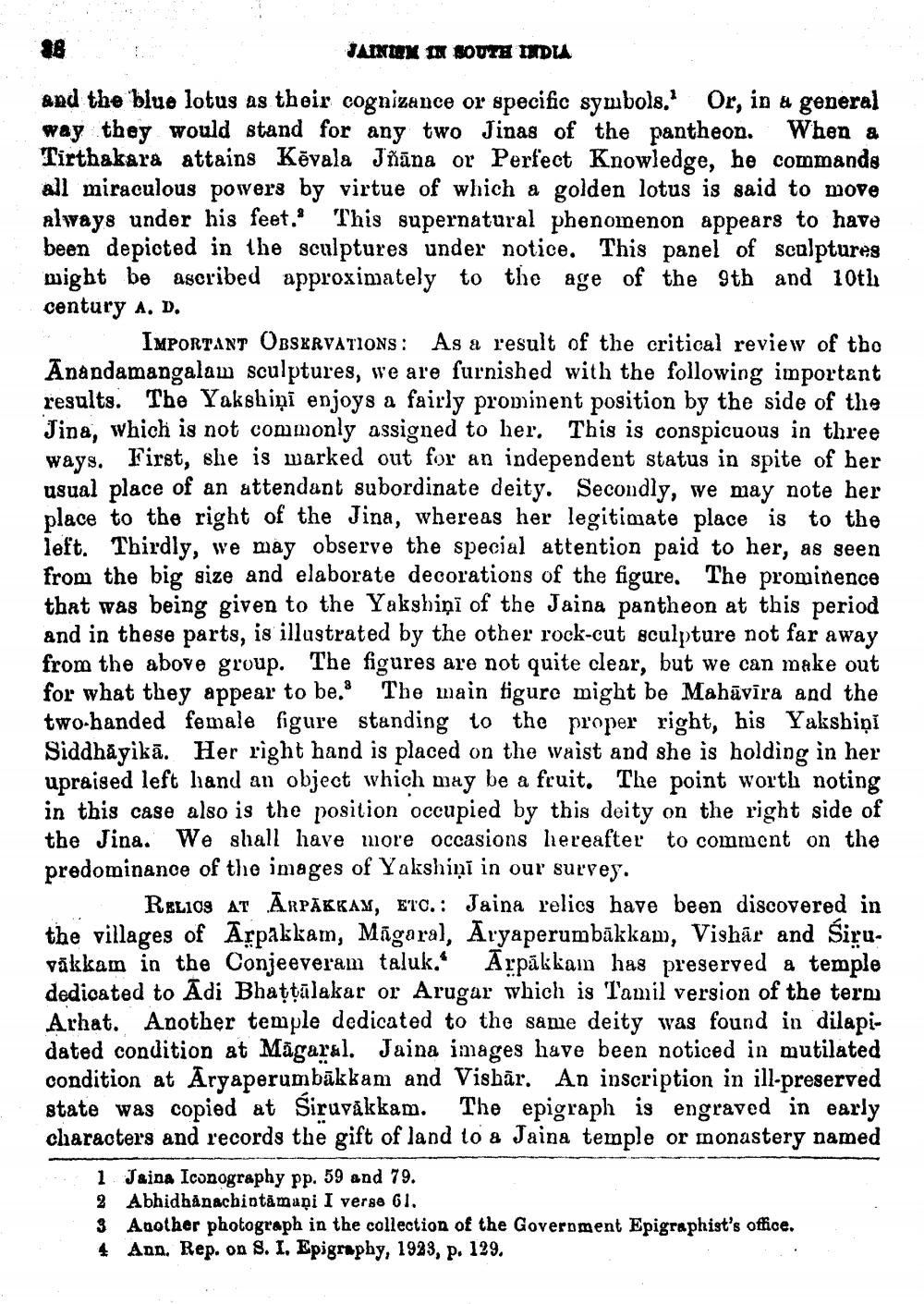________________
JAINDU IN SOUTH INDIA and the blue lotus as their cognizance or specific symbols.' Or, in a general way they would stand for any two Jinas of the pantheon. When & Tirthakara attains Kēvala Jñāna or Perfect Knowledge, he commands all miraculous powers by virtue of which a golden lotus is said to move always under his feet. This supernatural phenomenon appears to have been depicted in the sculptures under notice. This panel of sculptures might be ascribed approximately to the age of the 9th and 10th century A. D.
IMPORTANT OBSERVATIONS: As a result of the critical review of tho Anandamangalaw sculptures, we are furnished with the following important results. The Yakshiņi enjoys a fairly prominent position by the side of the Jina, which is not commonly assigned to her. This is conspicuous in three ways. First, she is marked out for an independent status in spite of her usual place of an attendant subordinate deity. Secondly, we may note her place to the right of the Jina, whereas her legitimate place is to the left. Thirdly, we may observe the special attention paid to her, as seen from the big size and elaborate decorations of the figure. The prominence that was being given to the Yakshiņī of the Jaina pantheon at this period and in these parts, is illustrated by the other rock-cut sculpture not far away from the above group. The figures are not quite clear, but we can make out for what they appear to be. The main figure might be Mahāvīra and the two-handed female figure standing to the proper right, his Yakshiņi Siddhāyikā. Her right hand is placed on the waist and she is holding in her upraised left hand an object which may be a fruit. The point worth noting in this case also is the position occupied by this deity on the right side of the Jina. We shall have more occasions hereafter to comment on the predominance of the images of Yakshiņi in our survey.
: Relics at ĀRPAKKAY, ETC.: Jaina relics have been discovered in the villages of Ārpakkam, Magaral, Aryaperumbākkam, Vishār and Siru. vākkam in the Conjeeveram taluk. Ārpākkam has preserved a temple dedicated to Ādi Bhattālakar or Arugar which is Tamil version of the term Arhat. Another temple dedicated to the same deity was found in dilapidated condition at Māgaral. Jaina images have been noticed in mutilated condition at Aryaperumbākkam and Visbār. An inscription in ill-preserved state was copied at Siruvākkam. The epigraph is engraved in early characters and records the gift of land to & Jaina temple or monastery named
1 Jaina Iconography pp. 59 and 79. 2 Abhidhånacbiotamani I verse 61. 3 Another photograph in the collection of the Government Epigraphist's office. 4 Ann. Rep. on S. I. Epigraphy, 1923, p. 129.




